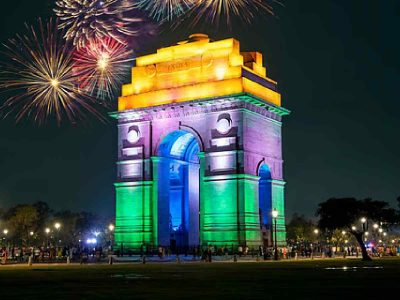February 28 is celebrated as National Science Day to mark the discovery of the Raman Effect by physicist CV Raman. It highlights the importance of scientific knowledge in transforming society. In Delhi, numerous museums, galleries, and parks celebrate this day with interactive exhibits, innovations, and displays on science and technology. These places provide an opportunity to explore various aspects of science, from historical discoveries to modern advancements, allowing everyone to appreciate how science shapes our world.
Five museums and galleries to visit
National Science Museum
The National Science Museum was established in 1992 and is one of the largest science centers in Asia. Located on Jawaharlal Nehru Marg, this museum is a hub for science lovers. It houses over 200 galleries, showcasing everything from the wonders of the solar system to the marvels of robotics.
Its interactive displays and science-themed exhibits offer a captivating experience for all ages. It offers engaging exhibits that cover various scientific fields. Visitors can experience interactive displays, models, and even science demonstrations, which make complex scientific principles accessible to people of all ages. A must-visit to celebrate National Science Day.
Museum of Illusions
Located at Rajiv Chowk, Connaught Place, the Museum of Illusions is a fun and educational experience. It features optical illusions and brain teasers that challenge your perception of reality. The exhibits offer an engaging way to learn about the science behind illusions, making it a great spot for science lovers and families. A quirky, engaging museum located in the heart of Delhi, the Museum of Illusions offers an exciting mix of puzzles, optical illusions, and mind-bending experiences. It’s a fun place to explore how the mind interprets science in fascinating ways.
National Agricultural Science Museum
Located at Dev Prakash Shastri Marg, this museum is dedicated to India’s agricultural achievements. Through its exhibits on farming techniques, biotechnology, and irrigation systems, visitors can explore how scientific advancements have transformed agriculture in India. It’s an informative experience for anyone interested in agricultural science. It provides a rich overview of India’s agricultural innovations and sustainability practices. Through its exhibitions, visitors can learn about the evolution of agriculture and how modern science helps feed the world.
Science and Technological Park, IIT Delhi
Situated within the IIT Delhi campus, this park is a unique space to explore various scientific innovations. Visitors can interact with live projects, learn about cutting-edge technologies, and get a glimpse of what the future of technology holds. At the Science and Technological Park, visitors can immerse themselves in the latest advancements in technology. With interactive exhibits on robotics, artificial intelligence, and the future of technology, this park offers a hands-on experience that showcases India’s contributions to modern science.
Nehru Planetarium
The Nehru Planetarium in New Delhi is one of the city’s most famous science landmarks. Located at Teen Murti Marg, Chanakyapuri, it offers a unique experience through its sky shows and educational programs about our solar system and beyond. A visit to this planetarium gives insight into space science and the wonders of the cosmos, making it a perfect destination for National Science Day.
Where heritage speaks science
In the national capital, science and heritage blend seamlessly, offering a fascinating journey into ancient scientific achievements. Historical landmarks reveal how early civilizations used science to shape their understanding of the world.
Jantar Mantar
Jantar Mantar in Delhi is an extraordinary 18th-century astronomical observatory. The site features large instruments designed to observe celestial bodies, predict eclipses, and measure time. The Samrat Yantra, a giant sundial—a device that uses the position of the sun to tell time—is the largest of its kind in the world. The observatory reflects ancient expertise in astronomy, with these tools showcasing how early scientists used mathematics and geometry to understand the cosmos. The precision of these instruments remains impressive, showing the scientific advancements of ancient India.
Iron Pillar of Qutub Minar
The Iron Pillar of Qutub Minar is a marvel of ancient engineering, known for its remarkable resistance to corrosion. Made of wrought iron—an iron alloy with a very low carbon content (less than 0.05%)—the pillar stands as a testament to the advanced metallurgy techniques of ancient times. A lot of research has been done to explore the rustless Iron Pillar. Its composition, containing high levels of phosphorus, helps prevent rusting, despite being exposed to the elements for over a thousand years.
Also Read: Top work-from-cafés in Delhi: Perfect spots for remote workers
The Iron Pillar remains a puzzle to modern engineers, as its longevity and durability defy conventional explanations, making it a unique example of ancient scientific ingenuity.





